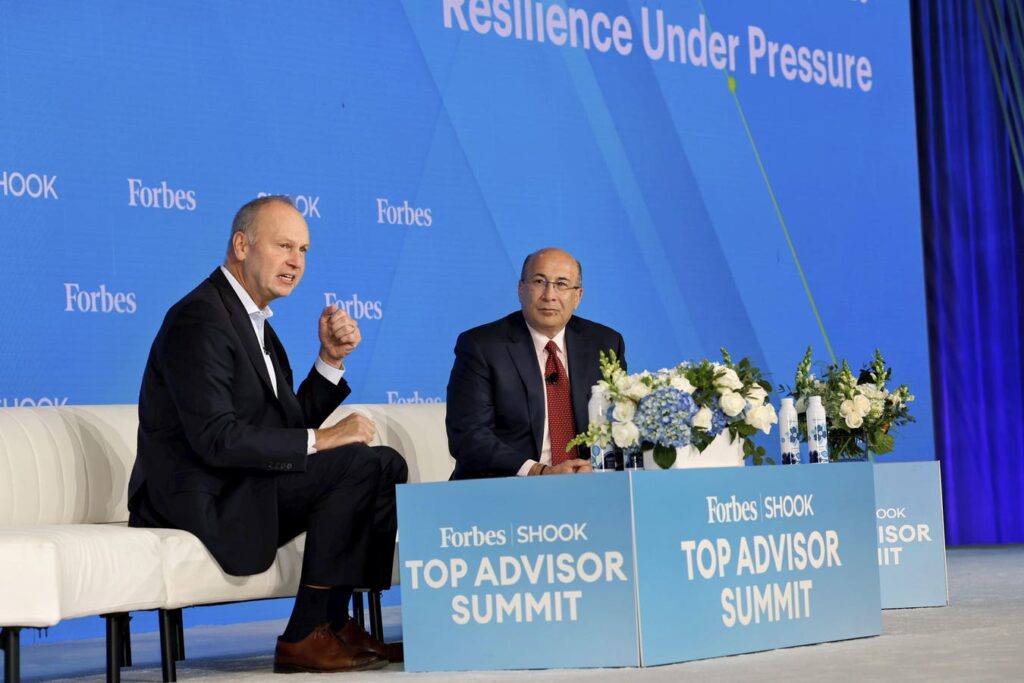The Federal Reserve has successfully achieved a soft landing and the current market rally should continue into next year, according to Michael Arone, chief investment strategist at State Street Global Advisors, who suggested that investors diversify beyond megacap stocks as the Federal Reserve continues to lower interest rates.
The benchmark S&P 500 index is up more than 23% this year, posting more than 40 record high closes so far in 2024. In the last two years, the index has almost doubled, spurred on by solid economic data and corporate earnings. What’s more, markets breathed a sigh of relief last month when the Federal Reserve quelled recession worries by finally lowering interest rates.
“The soft landing has already happened,” Arone said in an interview at the eighth annual Forbes/SHOOK Top Advisor Summit at the Encore At Wynn hotel in Las Vegas on Wednesday. “Inflation is headed in the right direction while corporate earnings and profits are very good.”
In fact, he predicted that next year, corporate profit margins will hit levels never before seen in the United States: As S&P 500 earnings growth nears 15%, that should in turn boost profit margins north of 13%.
As rates continue to come down, that will spur new capital formation: “It’s the next boost for this bull market,” said Arone. Bull markets last for a median seven years, but the current one just recently hit its two year anniversary. “I’m absolutely in the camp that we can have another five years,” he said, adding, “A raging bull market followed all three previous soft landings.”
He expects the Federal Reserve will slash rates again—but this time by 25 basis points—at their next meeting in November, with another 25 basis point cut in December looking possible as well.
What’s more, there were no major shocks to the financial system as the Fed raised rates in recent years, for a few reasons, said Arone. “During the pandemic, we took a bazooka in terms of fiscal spending,” he said. “The fact we also kept rates low for so long ultimately allowed businesses and investors to lock in good long-term rates.” He identifies four major themes that have acted as tailwinds for the market, though some may soon become headwinds; These include lower tax rates, lower interest rates, globalization and technology—particularly AI.
When it comes to investor portfolios, State Street is overweight on U.S. stocks—both large and small caps—given the soft economic landing. The firm is particularly bullish on sectors like financials—the third most profitable sector in the S&P 500 which now looks more attractive with the yield curve normalized—and communication services, where there has been good earnings growth but valuations aren’t overstretched like in tech. With yields back to normal and as rates continue to fall, there should be a big rotation away from the Mag 7 stocks (the FAANG stocks plus Tesla and Nvidia), predicted Arone. Small cap stocks, which are correlated to interest rates, should also see better performance as the Fed continues its monetary easing cycle.
While bonds offer income and diversity, they have proven not to be a good hedge against inflation, he said. “It’s time to take the first steps away from money market funds to short and medium duration bonds, maybe some investment grade corporate bonds as well.”
Arone also pointed out that in the next ten years, there are greater chances for more geopolitical conflicts, deglobalization and inflation. He recommended investors subsequently diversify 5% to 10% of their portfolio in what he calls “real assets” like gold, real estate, commodities, natural resources, infrastructure and industrial metals. “Things like energy transition or the ongoing housing imbalance are all inflationary over time,” said Arone. “It’s a departure from the benign last decade.”
Looking ahead to the looming Presidential election in November, Arone admitted there will be a lot of headline volatility but told investors to remain unfazed. “The election isn’t going to matter at all as it relates to markets,” he insisted. “When it comes to your portfolio, be logical.”
Read the full article here


